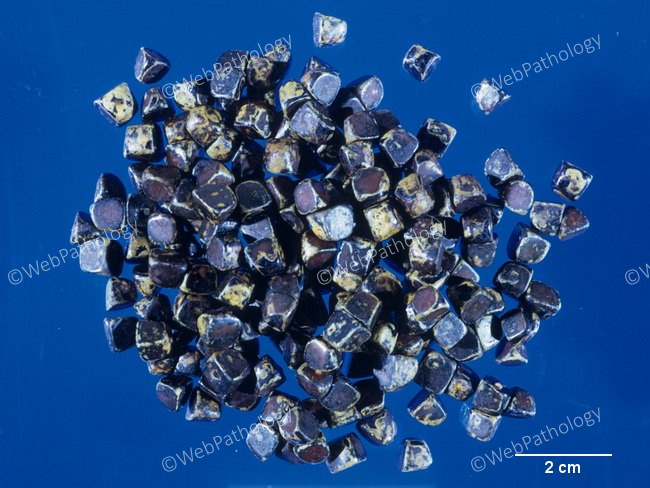Ileal Diseases & Gallstones


Comments:
Ileal Diseases & Gallstones: Ileal diseases (e.g. Crohn's disease) or resection of the terminal ileum are risk factors for both cholesterol and pigment gallstones. In both scenarios, there is decreased functionality of the terminal ileum where 90% of the intestinal bile salts are normally resorbed. There is excessive bile salt excretion in feces and impairment of the enterohepatic circulation of bile salts. Hepatic secretion of bile salts is greatly reduced and solubility of cholesterol in bile decreases. Supersaturation of bile with cholesterol leads to the formation of cholesterol monohydrate crystals and stones.Increased delivery of bile salts to the colon solubilizes unconjugated bilirubin, thereby increasing bilirubin concentrations in bile and leading to the formation of black pigment stones.The image shows 189 black pigment gallstones found in a cholecystectomy specimen from a patient with Crohn's disease.



